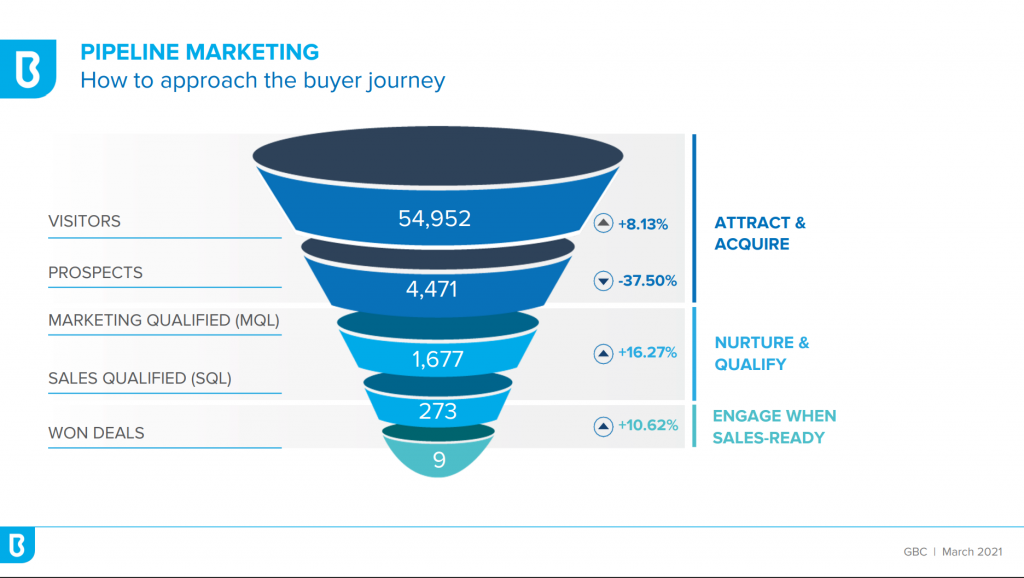As a current student of George Brown College, I was happy to participate
in Alex Kim’s presentation and have a chance to talk
about B2B Marketing in-depth and it’s potential in today’s world.
Alex is the alumni of George Brown College, he specializes in Campaign
Strategy & Planning and Marketing Technology. He has four
years of experience in Digital Marketing, including three years in B2B.
B2B has various of features different from B2C
B2B and B2C marketing both need to by hyper-targeted to get results, but this can be a big challenge in particular for B2B brands. B2C campaigns can reach any potential customer who would be interested in their product, even if that person theoretically wouldn’t be the buyer. In B2B marketing, you need to appeal to a specific individual or small group of individuals within the business. These are the decision makers.
● Longer sales cycle: In many sectors, an initial B2B purchase is likely to result in years of future business. The typical lifecycle of a satisfied B2B customer is therefore far longer than that of a B2C ecommerce customer.
● Companies often know their audience: In B2B marketing, the logic of the product and its features is more important. Understanding the buyers and how they operate within the confines of their organizations’ procedures is crucial.
● Relationship driven marketing – long term: B2B purchases are often ongoing relationships with the vendor — the business can’t just dispose of the product if they don’t like it. This makes it a much more significant decision for a client, and B2B marketers need to be mindful of that.
● Content is more informational: Unlike a B2C audience, B2B customers expect to be “catered to” by sales and marketing teams. What can it do for a business? What can’t it do for a business? What does the customer need to know to be successful with your product? These questions are more important for B2B customers.
● Demonstrate organizational benefits vs. individual: B2B is about people using the product more than it is about the product itself.
● Frequent cross-sell/upsell opportunities: Selling to an existing customer is always going to be easier and cheaper than pitching to a new one. as you know the customer, you have an insight into what they like and don’t like, and how their business may benefit from what you’re offering.

Pipeline marketing combines sales and marketing data to focus on converting leads and prospects into customers instead of continuing to generate more leads. Entrepreneurs can use pipeline marketing to make their sales process more efficient and less costly.
A buy’s journey is the journey or buying process that consumers go through to become aware of, evaluate, and purchase a new product or service, and it consists of three stages that make up the inbound marketing framework: awareness, consideration, and decision.
It is important to deliver practical and relevant content to B2B customers. You should identify customer’s want, and answer most relevant information based on their needs.
I was heard about B2B and B2C marketing long time ago, but I never think seriously about them, and what are difference between them. Thanks to Alex, his presentation and explanation was clear and detailed, he gives me a chance to get to know the benefits and opportunities of B2B in deep.